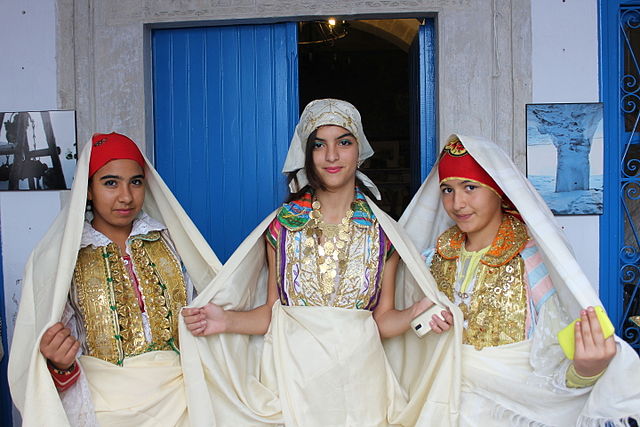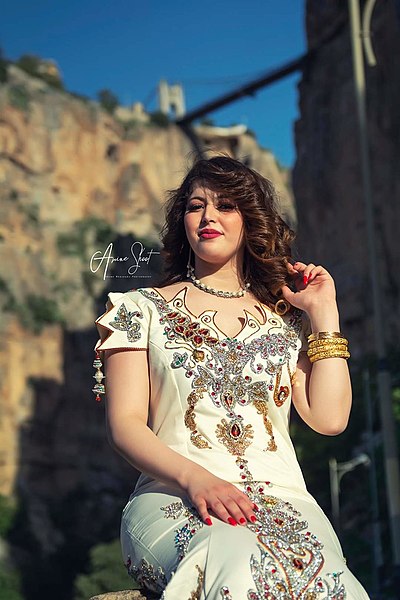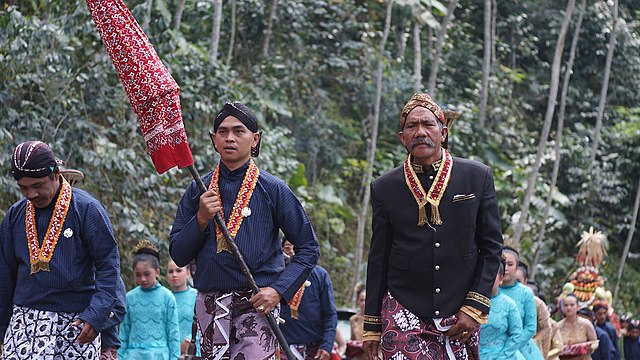A folk costume expresses a national identity through clothing or costume, which is usually associated with a specific region or period of time in history. It can also indicate social, marital, or religious status. If the costume is used to represent the culture or identity of a specific ethnic group, it is usually known as ethnic costume. Such costumes often come in two forms: one for everyday occasions, the other for traditional festivals and formal wear. The word "costume" in this context is sometimes considered pejorative due to the multiple senses of the word, and in such cases "clothing", "garments" or "regalia" can be substituted without offense.
Modern illustration of an Ancient Egyptian men's tunic in a style popularized in the New Kingdom
Egyptian musicians wearing galabiyat
Traditional Tunisian clothing, including safasir
Traditional gandoura, also called djebba fergani, from Algeria
An ethnicity or ethnic group is a group of people who identify with each other on the basis of perceived shared attributes that distinguish them from other groups. Those attributes can include a common nation of origin, or common sets of ancestry, traditions, language, history, society, religion, or social treatment. The term ethnicity is often used interchangeably with the term nation, particularly in cases of ethnic nationalism.
A group of ethnic Bengalis in Dhaka, Bangladesh. The Bengalis form the third-largest ethnic group in the world after the Han Chinese and Arabs.
The Javanese people of Indonesia are the largest Austronesian ethnic group.
The racial diversity of Asia's ethnic groups (original caption: Asiatiska folk), Nordisk familjebok (1904)
Assyrians are one of the indigenous peoples of Northern Iraq.








